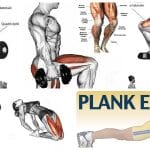3. Torn meniscus
The meniscus is a cartilage in the form of a horseshoe situated between the upper and lower leg bone. It can get torn due to a sudden fall or knee twist or a simple wear and tear. The meniscus keeps the knee stable, but as we age it gets worn down. A minor tear can result in a small swelling which will improve over the course of 2-3 weeks. A moderate-level tear is painful when bending the knee. Even though the pain can subside after a couple of weeks, overuse can cause it to get re-injured. A severe tear will make walking extremely difficult. The knee might start to “wobble”, or it can all of a sudden become stiff and stop moving.
How to fix it: An MRI scan can give a precise indication of how severe the injury is. Also, icing the injury and resting can help tremendously with a torn meniscus. The doctor may even suggest a physical therapy consisting of specific movements which you’ll need to do on a daily basis, like exercising the quadriceps in order to strengthen the joint and the previously mentioned clam openers. If these don’t alleviate the pain and there is still swelling, then surgery is the best solution to repair or remove the cartilage. Post-surgery treatment may require you to use crutches for several miles, but in the end, it’s well worth the effort.
4. Gastrocnemius Tendonitis
This is basically your calf muscle which forms the back of your lower leg and goes behind your knee and attaches above the joint. The tendons tend to receive a lot of strain when the knee is extended and the toes are pointing upward, which in turn pulls on the tendons. This condition is much more present in cyclists in comparison to runners because of improper fit or some other fatigued muscle in the body. If the bike seat is positioned too high or it is too far back, the calves will be in a vulnerable position. They can be put on a lot of strain if the gluteus muscles aren’t properly doing their job, like with uphill riding, running or climbing.
READ: How to Prevent Knee Problems When Working Out
How to fix it: First thing is that you rest properly, ice the painful spot and massage it to decrease the swelling. You can also try a calf sleeve which will compress the spot while running. The right sleeve will offer good support to the painful area and decrease the strain while the muscle continues to heal itself. In the case of bike riding, you can also get yourself a professional bike fit.


